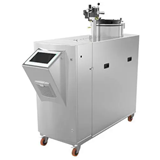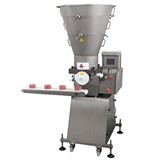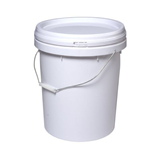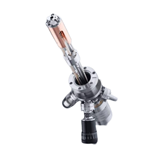The new coating could be used to create durable, scratch-resistant lenses for eyeglasses, self-cleaning windows, improved solar panels, and new medical diagnostic devices, said principal investigator Joanna Aizenberg, the Amy Smith Berylson Professor of Materials Science in the Harvard School of Engineering and Applied Sciences (SEAS), a core faculty member at the Wyss Institute for Biologically Inspired Engineering, and professor of chemistry and chemical biology.
The new coating builds on an award-winning technology pioneered by Aizenberg and her team called Slippery Liquid-Infused Porous Surfaces (SLIPS) — the slipperiest synthetic surface known. The new coating is equally slippery, but much more durable and fully transparent. Together these advances solve longstanding challenges in creating commercially useful materials that repel almost everything.
SLIPS was inspired by the slick strategy of the carnivorous pitcher plant, which lures insects onto the ultraslippery surface of its leaves, where they slide to their doom. Unlike earlier water-repelling materials, SLIPS repels oil and sticky liquids like honey, and it resists ice formation and bacterial biofilms as well.
While SLIPS was an important advance, it was also "a proof of principle" — the first step toward a commercially valuable technology, said lead author Nicolas Vogel, a postdoctoral fellow in applied physics at SEAS.
"SLIPS repels both oily and aqueous liquids but it's expensive to make and not transparent," Vogel said.
The original SLIPS materials also need to be fastened somehow to existing surfaces, which is often difficult.
"It would be easier to take the existing surface and treat it in a certain way to make it slippery," he said.
Vogel, Aizenberg, and their colleagues sought to develop a coating that accomplished this and worked as SLIPS does. SLIPS' thin layer of liquid lubricant allows liquids to flow easily over the surface, much as a thin layer of water in an ice rink helps an ice skater glide.
To create a SLIPS-like coating, the researchers corral a collection of tiny spherical particles of polystyrene, the main ingredient of Styrofoam, on a flat glass surface like a collection of ping-pong balls. They pour liquid glass on them until the balls are more than half buried. After the glass solidifies, they burn away the beads, leaving a network of craters that resembles a honeycomb. They then coat that honeycomb with the same liquid lubricant used in SLIPS to create a tough but slippery coating.
"The honeycomb structure is what confers the mechanical stability to the new coating," Aizenberg said.
By adjusting the width of the honeycomb cells to make their diameter much smaller than the wavelength of visible light, the researchers kept the coating from reflecting light. This made a glass slide with the coating completely transparent.
The coated glass slides repelled a variety of liquids, just as SLIPS does, including water, octane, wine, olive oil and ketchup. And, like SLIPS, the coating reduced the adhesion of ice to a glass slide by 99 percent. Keeping materials frost-free is important, since adhered ice can take down power lines, decrease the energy efficiency of cooling systems, delay airplanes, and lead buildings to collapse.
Importantly, the honeycomb structure of the SLIPS coating on the glass slides confers unmatched mechanical robustness. It withstood damage and remained slippery after treatments that often scratched and compromised ordinary glass surfaces and other popular liquid-repellent materials, such as touching, peeling off a piece of tape, and wiping with a tissue.
"We set ourselves a challenging goal: to design a versatile coating that's as good as SLIPS but much easier to apply, transparent, and much tougher — and that is what we managed," Aizenberg said.
The team is now honing its method to better coat curved pieces of glass as well as clear plastics such as Plexiglas, and to adapt the method for the rigors of manufacturing.
"Joanna's new SLIPS coating reveals the power of following nature's lead in developing new technologies," said Donald E. Ingber, founding director of the Wyss Institute, professor of bioengineering at SEAS, and Judah Folkman Professor of Vascular Biology at Harvard Medical School and Boston Children's Hospital, a Harvard affiliate.
"We are excited about the range of applications that could use this innovative coating."






